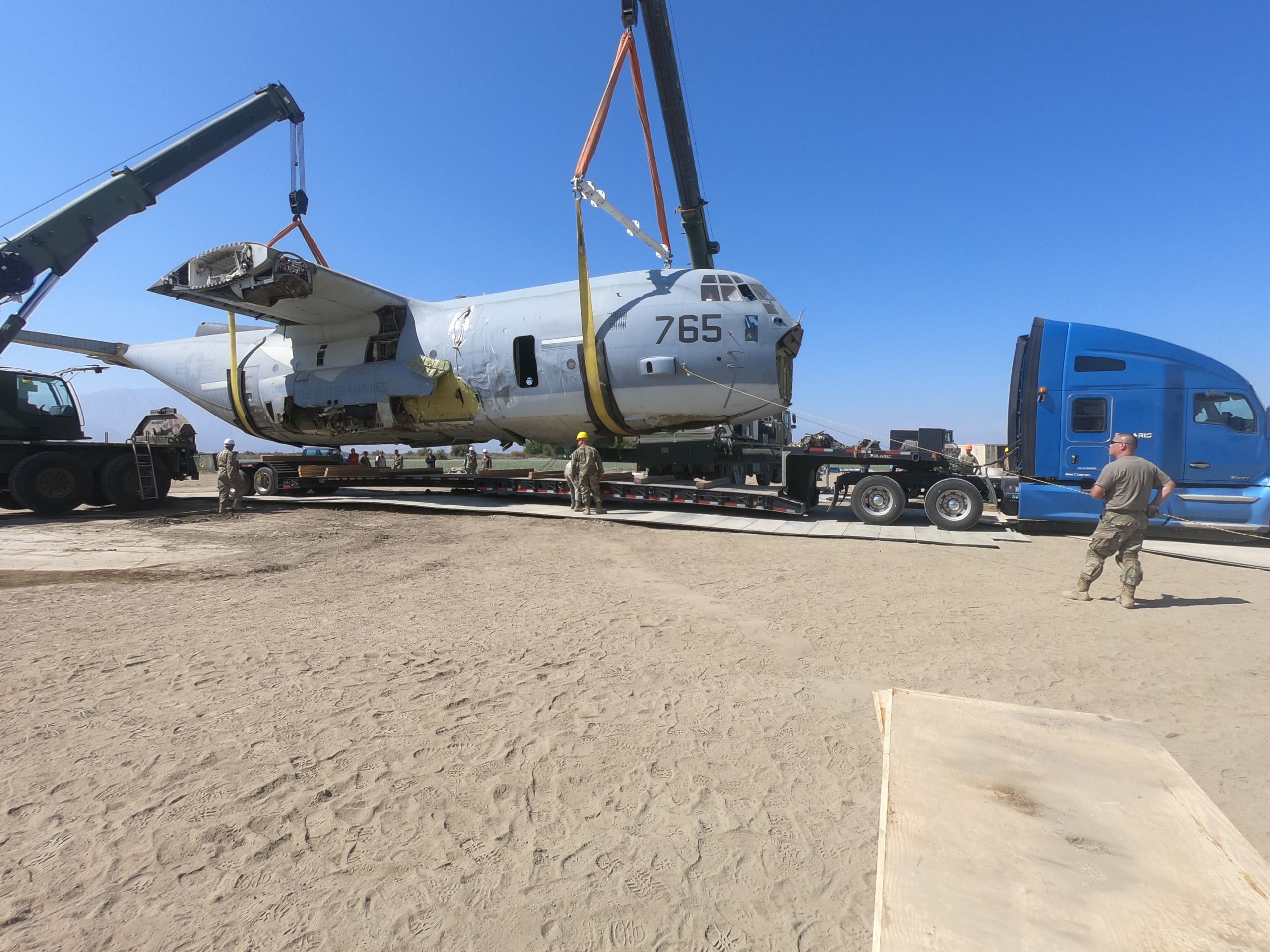Cal Guard partners with U.S. Marines
to recover aircraft involved
in air-to-air collision
Members of the California Air National Guard's 146th Maintenance Group provided critical aircraft recovery support to assist Marines from Twentynine Palms as they removed a KC-130J that collided with a Marine F-35B in the city of Thermal, California.
“The California Air National Guard has been a major help as far as the expertise they have brought to the table. It was extremely important to have someone here to speak in detail about this particular aircraft in order to come together with joint minds, so we can do this job to the best of our ability. It has been nothing but cohesive."
U.S. Marine Corps Lance Cpl. Elliot Broussard
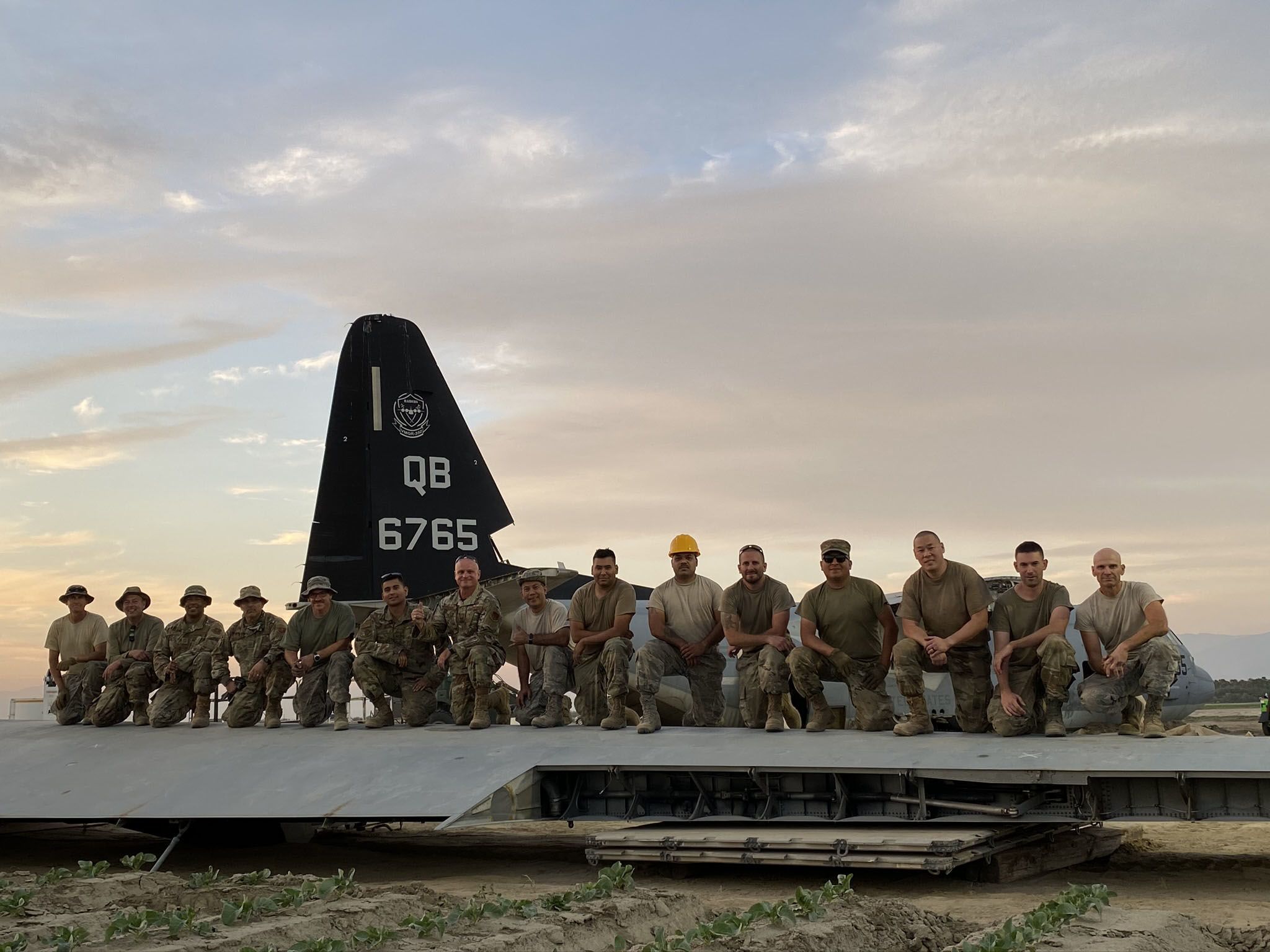
Members of the California Air National Guard’s 146th Maintenance Group provided critical aircraft recovery support by assisting Marines from Twentynine Palms, California, as they disassembled, lifted and loaded the remains of a KC-130J aircraft that collided with a Marine F-35B during a refueling mission onto a transport truck Oct. 10, 2020.
The KC-130J made an emergency landing shortly after making contact with the F-35B during an air-to-air refueling mission above the Southern California city, landing in an agricultural field a few miles from Thermal airport, with all crew members surviving the crash.
As Marines began investigating the incident, the 146th Crash Damage and Recovery team (CCDAR), specializing in recovery of crashed aircraft, traveled to the site to begin assisting the Marines'' Wing Support Squadron 374 team.
U.S. Air National Guard Chief Master Sgt. Dominic Caldwell, 146th's quality assurance superintendent overseeing recovery efforts, says he was genuinely impressed with the professionalism and talent from all service branches that came together.
“We are very proud to be able to help a sister service, and we enjoyed working with the Marines," said Caldwell. "It’s been great teamwork all around. We inherited Airmen from the 129th Rescue Wing to help us as well, and they have been phenomenal with the task at hand."
Caldwell said once his team got to the wreckage, Marines and Airmen decisively began to split the work and leverage the skills from each service to maximize efficiency and workloads.
“Initially, the Marines removed the engines and the propellers from the wing, then we started removing the wings and other pieces of the aircraft to get us to the next stage of transporting the aircraft,” said Caldwell.
U.S. Marine Corps Sgt. Raphael Aldama-Falgado, 374th team leader, shared Caldwell’s sentiments on the two services working together, citing communication as the major factor for success.
“There was good communication throughout the recovery. We were able to come together and establish a plan to make sure we were not conflicting with each other," said Aldama-Falgado. "When we got here my team and I had to assess if we had the capacity and how we could remove this aircraft from the field. One of the things we had to look at was if the ground itself had the variability to support our equipment’s weight."
Added Aldama-Falgado, "With safety as the primary focus of this mission, we ran our tests and determined this was something within our capabilities."
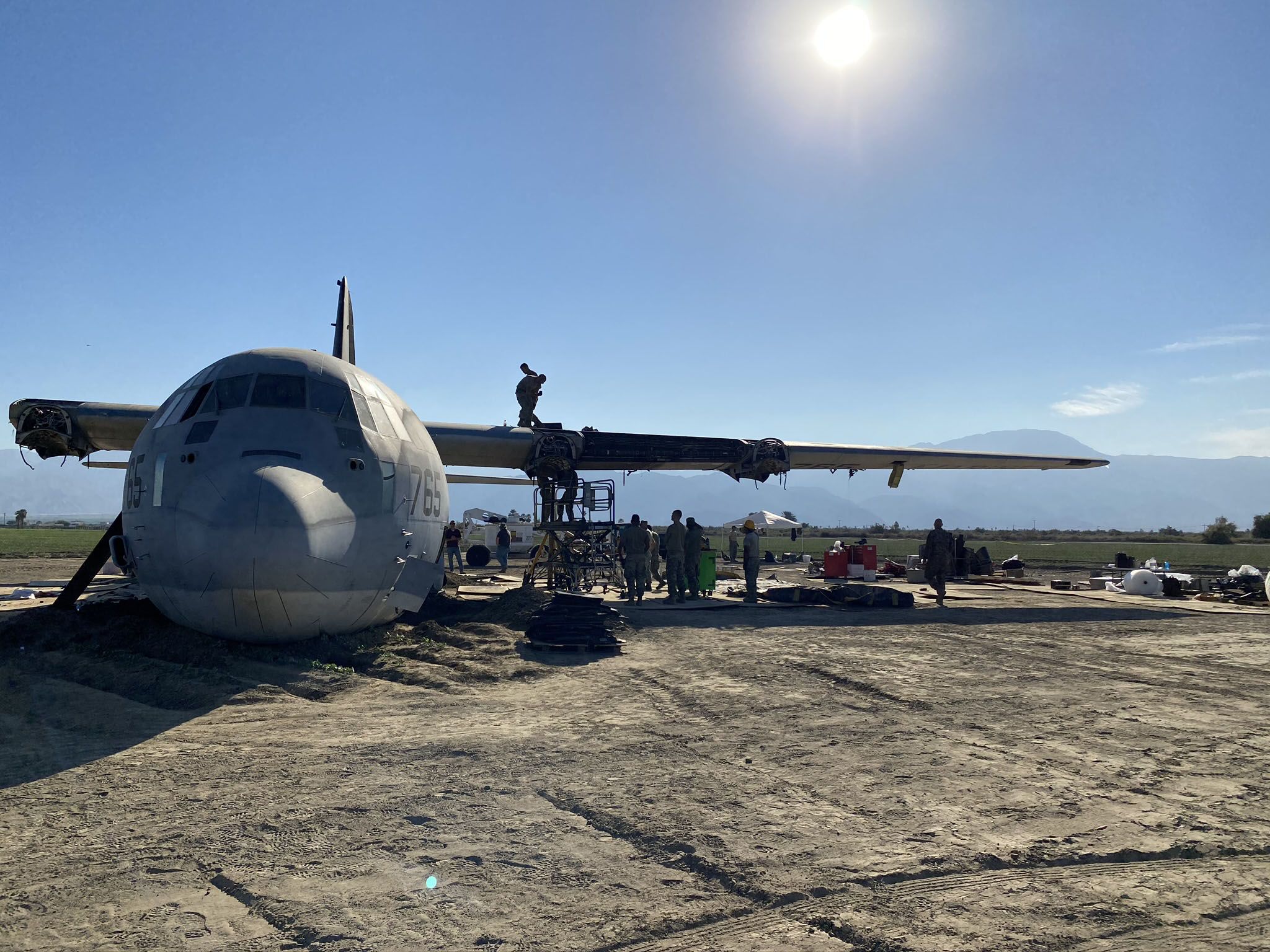
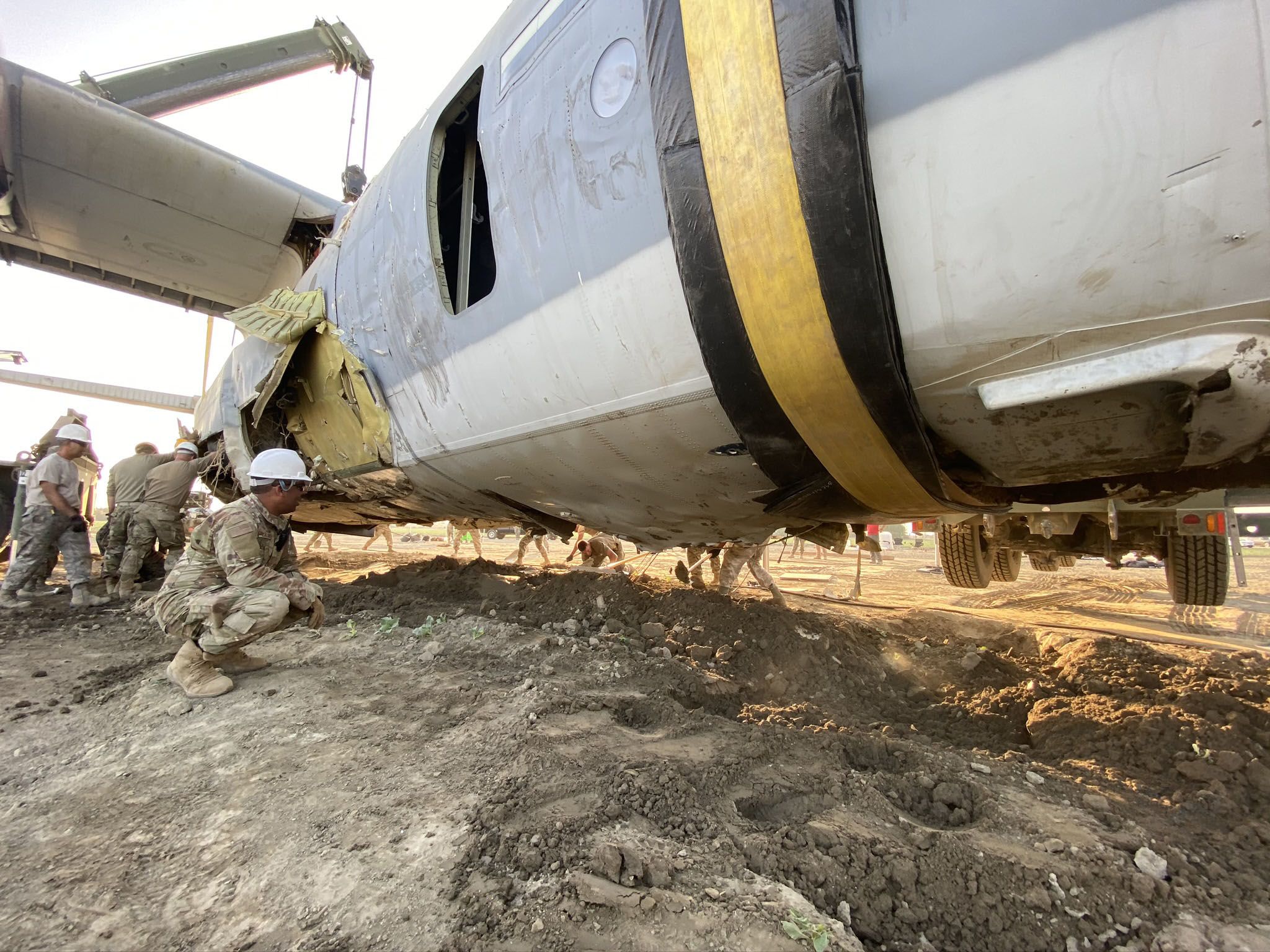
VIDEO: U.S.Marine Corps Lance Cpl. Elliot Broussard, a MAC 50 crane operator from Twentynine Palms' Wing Support Squadron 374, guides the lift into position to move the KC-130J aircraft onto a flatbed vehicle in an agricultural field in Thermal, California, Oct. 10, 2020. (U.S. Air National Guard video by Tech. Sgt. Nieko Carzis)
VIDEO: U.S.Marine Corps Lance Cpl. Elliot Broussard, a MAC 50 crane operator from Twentynine Palms' Wing Support Squadron 374, guides the lift into position to move the KC-130J aircraft onto a flatbed vehicle in an agricultural field in Thermal, California, Oct. 10, 2020. (U.S. Air National Guard video by Tech. Sgt. Nieko Carzis)
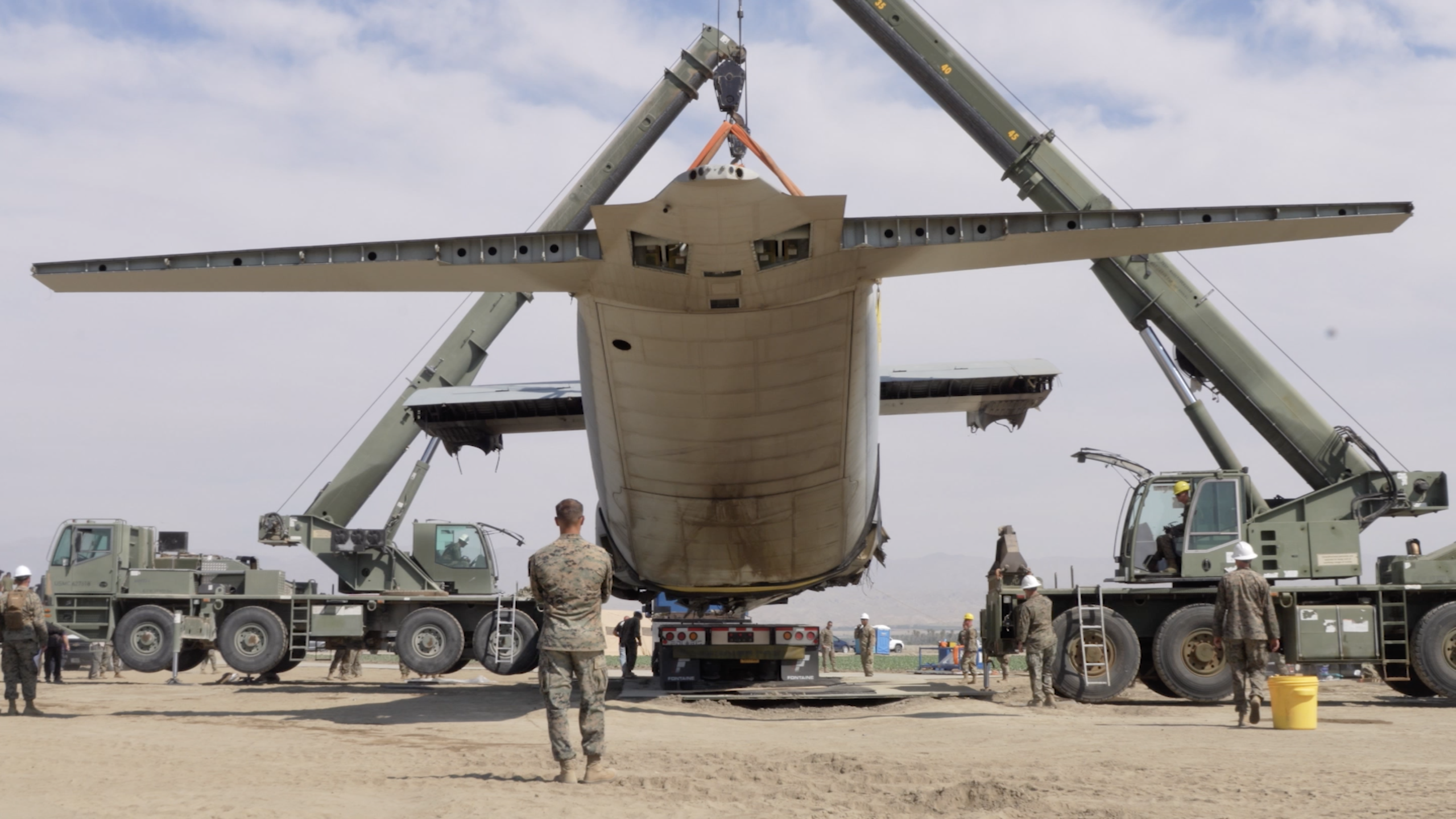
The Marines and the CCDAR team worked diligently to prepare the aircraft for transport until Oct. 10, 2020, when they finally loaded it onto a large flatbed vehicle.
U.S. Marine Corps Lance Cpl. Elliot Broussard, also with the 374th, operates the military all-terrain crane known as a Terex-Demag MAC-50. He was one of two operators who lifted the aircraft. Broussard says he was excited for the opportunity to help remove the KC-130J, and was eager to use his training with this real-world mission. He explained that Cal Guard’s contributions played a significant role in the success.
“The California Air National Guard has been a major help as far as the expertise they have brought to the table," said Broussard. "It was extremely important to have someone here to speak in detail about this particular aircraft in order to come together, with joint minds so we can do this job to the best of our ability. It has been nothing but cohesive."
